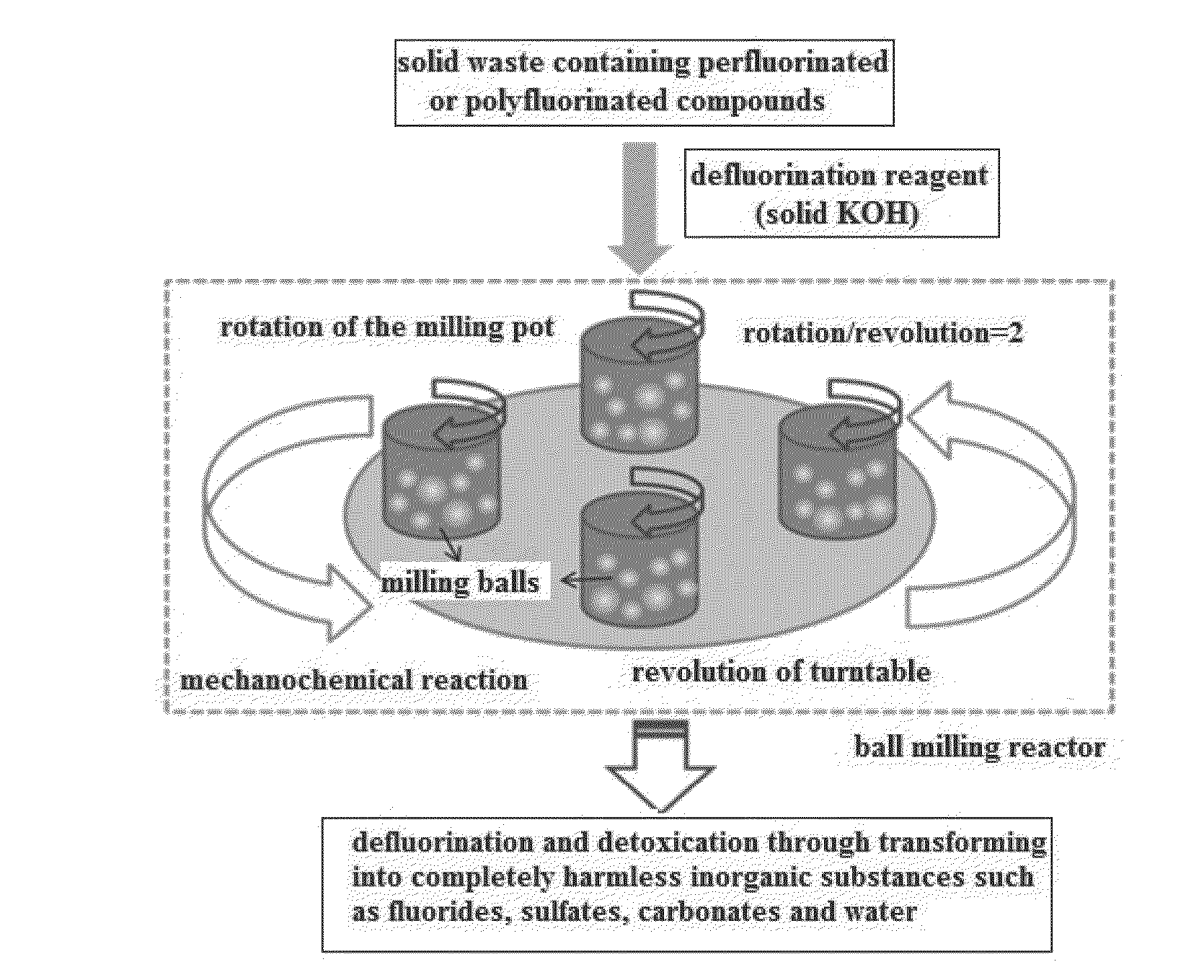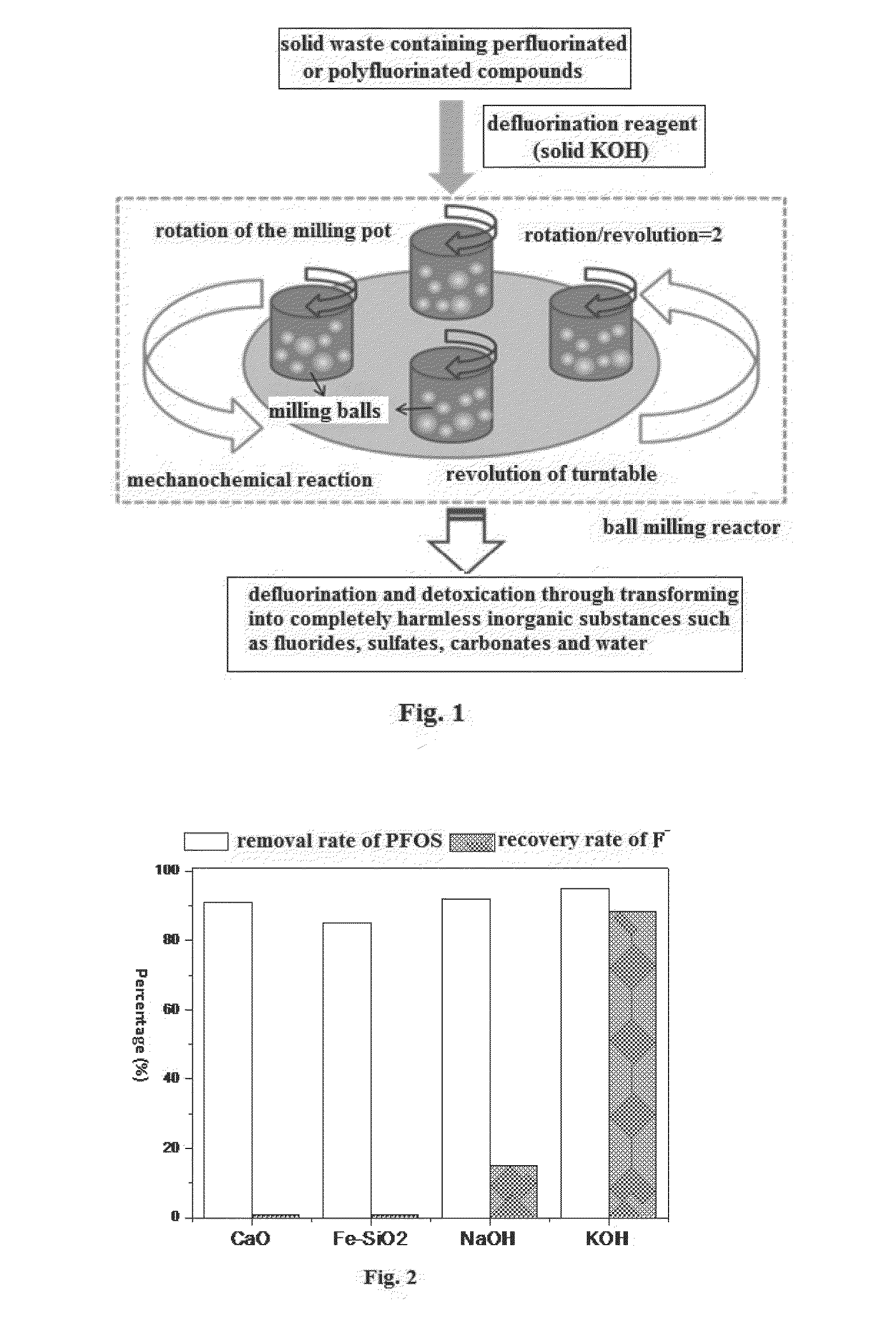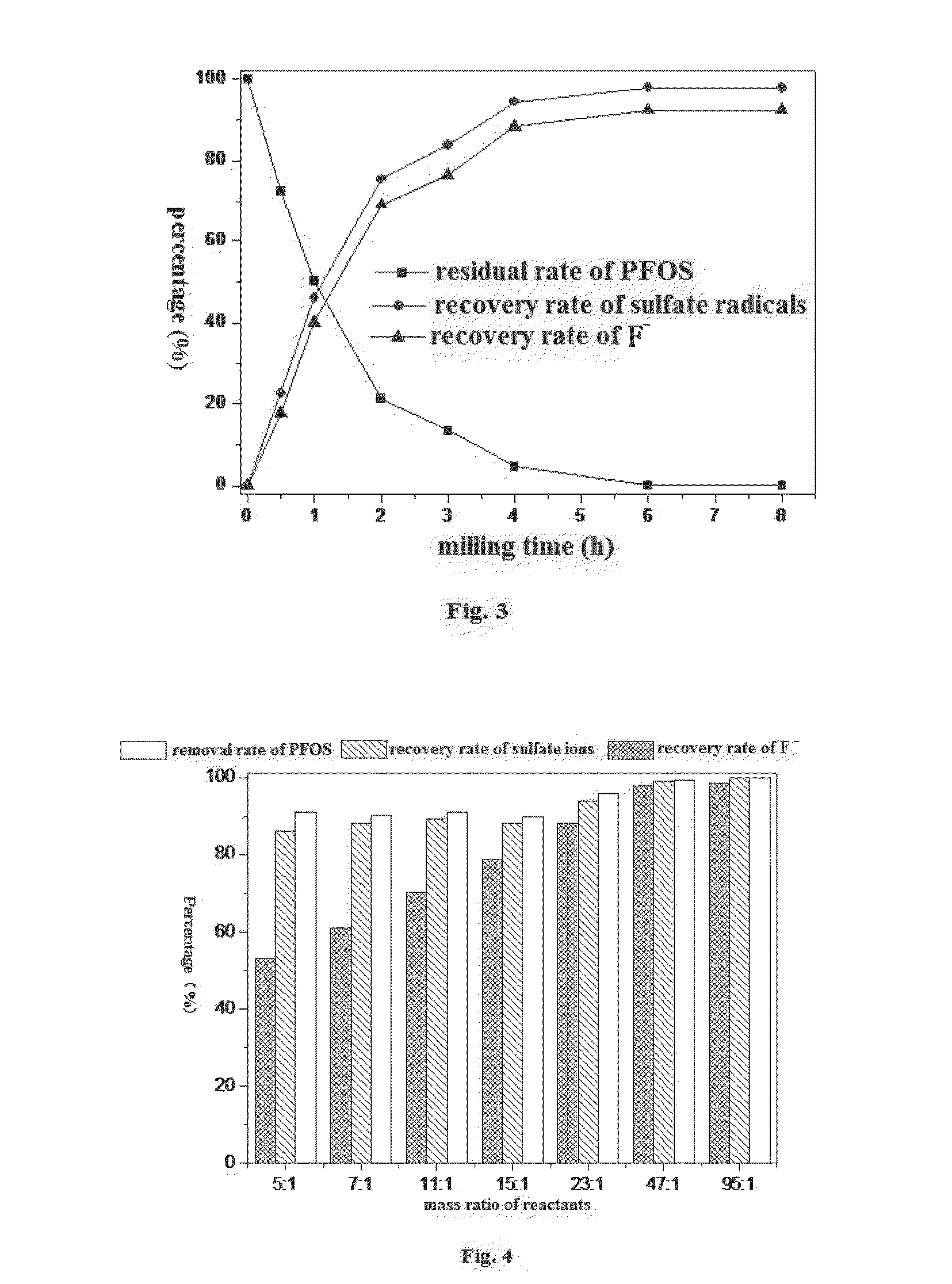Method for mechanochemical treatment of solid wastes containing perfluorinated or polyfluorinated compounds
a technology of perfluorinated or polyfluorinated compounds and solid wastes, applied in the direction of chemical protection, etc., can solve the problems of long-term persistence, high bioaccumulation, strong biotoxicity, and the ability to migrate long distan
- Summary
- Abstract
- Description
- Claims
- Application Information
AI Technical Summary
Benefits of technology
Problems solved by technology
Method used
Image
Examples
example 1
[0024]In order to compare the performance of solid KOH with other defluorination reagents, the same mass of CaO, mixture of iron and silica sand (Fe—SiO2, mass ratio of Fe and SiO2 is 10:1), sodium hydroxide (NaOH) and solid KOH are used as defluorination reagents and are put through the processing steps shown in FIG. 1.
[0025]Separately mixing different defluorination reagents with the solid waste containing 85% potassium perfluorooctane sulfonate (PFOS) together at the mass ratio of 23:1 (namely 4.6 g defluorination reagent and 0.2 g PFOS waste) and putting 4.8 g of different mixtures so obtained into ball milling pots, adding 20 big milling balls (9.60 mm in diameter and weight 4.15 g in average) and 90 small milling balls (5.50 mm in diameter and weight 0.88 g in average) into each pot. All the ball milling pots are 45 mm in depth, 50 mm inner diameter and with 85 mL of effective volume; there is an elastic gasket between the pot opening and the lid for tight sealing. Securing th...
example 2
[0026]Adopting solid KOH as the defluorination reagent and keeping the reaction conditions the same as in example 1, this example is designed to determine the influence of different milling time upon the effect of ball milling process. Milling the different batches of the same sample for 0.5 h, 1h, 2 h, 3 h, 4 h, 6 h, 8 h respectively, collecting the powder from the ball milling pots into a sealed bag. During the laboratory analysis, dissolving 0.050 g powder obtained after different milling time in 50 mL high-purity water separately and using ultrasonic vibration 30 minutes to ensure complete dissolution. Analyzing the solutions so obtained with the liquid chromatography—mass spectrometry—mass spectrometry (LC-MS-MS) to determine the residual amount of PFOS and with ion chromatography (IC) to determine the concentration of fluoride ions and sulfate ions. As is shown in FIG. 3, PFOS is gradually degraded with the increase of the milling time while the recovery rates of fluoride ions...
example 3
[0027]Adopting different mass ratios of reactants (KOH: PFOS=5:1, 7:1, 11:1, 15:1, 23:1, 47:1 and 95:1 respectively) and keeping the total mass of reactants 4.8 g, adding the mixtures of different mass ratios into ball milling pots and conducting the milling experiment under the same conditions as in example 1. As is shown in FIG. 4, after 4 hours of milling process, the degradation rate of PFOS and the recovery rate of sulfate ions keep stable firstly and then increase in accordance with the increase of the mass ratios of reactants; the recovery rate of fluoride ions shows linear increase in relation to the increase of the mass ratios of reactants. The higher the mass ratios, the faster the degradation rate and the better the degradation effect; however, the consumption of KOH increases accordingly. The better degradation effect, while keeping the mass ratio of the reactants unchanged, can also be realized through extending milling time. In addition, though the high mass ratio of t...
PUM
 Login to View More
Login to View More Abstract
Description
Claims
Application Information
 Login to View More
Login to View More - R&D
- Intellectual Property
- Life Sciences
- Materials
- Tech Scout
- Unparalleled Data Quality
- Higher Quality Content
- 60% Fewer Hallucinations
Browse by: Latest US Patents, China's latest patents, Technical Efficacy Thesaurus, Application Domain, Technology Topic, Popular Technical Reports.
© 2025 PatSnap. All rights reserved.Legal|Privacy policy|Modern Slavery Act Transparency Statement|Sitemap|About US| Contact US: help@patsnap.com



